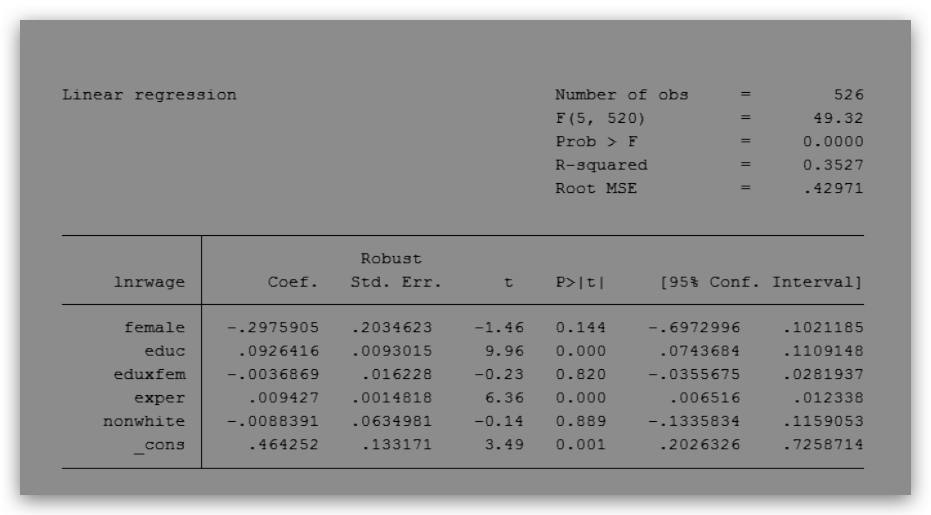本次澳洲代写作业案例分享主要是一个计量经济学代写的Problem Set
1. (40 points) We will use the TeachingRatings.dta dataset accompanying this problem set. Run
a regression of course eval on beauty, including some additional variables to control for the
type of course and professor characteristics. In particular, include intro, onecredit, female,
minority, and nnenglish as additional regressors.
(a) What is the estimated effect of a one standard deviation increase in beauty on course eval?
(b) Is this effect statistically significant at the 5% level?
(c) Are the variables (intro, onecredit, female, minority, and nnenglish) jointly significant
at the 5% level?
(d) Now compare the results to the simple regression of course eval on beauty only. What
is the sign of the omitted variable bias that this simple regression suffers from?
A. Negative.
B. Positive.
C. There is no omitted variable bias.
D. There is perfect multicollinearity in this model so the sign of the bias cannot be
determined.
(e) Professor Smith is a black male teaching a three-credit introductory course. He has
cosmetic surgery that increases his beauty index from one standard deviation below the
average to one standard deviation above the average. What is the effect of this change
on his teacher evaluations?
(f) Professor Jones is a white male with average beauty and is a native English speaker. He
teaches a three-credit upper-level course. Predict Professor Jones’s course evaluations.
(g) Now add age and age squared to your model. Are these two variables jointly significant
(i.e. test H0 : βage = βage2 = 0) at the 5% level?
(h) You know that Professor Jones is 30-year old. Professor Trump is a 70-year old white
male with average beauty, native English speaker teaching a three-credit upper-level
course. Calculate the predicted difference in Prof. Jones’s and Prof. Trump’s evaluations
(i.e. predicted course eval for Jones minus predicted course eval for Trump)?
2. (40 points) You estimate a wage regression, where the dependent variable is the logarithm of
wage (lnrwage) and the independent variables are:
- female { dummy variable indicating a woman
- educ { number of years of education
- eduxfem { interaction between educ and female, i.e. eduxfem = educ × female
- exper { years of experience
- nonwhite { dummy variable indicating if a person is non-white
and obtained the following regression results in STATA:

(a) Which of the following interpretations is correct?
A. on average, an additional year of experience increases wages by 0.94%
B. on average, a 1% increase in the number of years of experience leads to increase in
wages by 0.0094%
C. on average, a 1% increase in the number of years of experience leads to increase in
wages by 0.94%
D. on average, a 1% increase in the number of years of experience increases wages by
0.0094
(b) Construct a 95% confidence interval for the predicted effect of obtaining 3 more years of
experience on wages.
i. What is the lower end of the interval?
ii. What is the upper end of the interval?
(c) Calculate the predicted effect of obtaining 3 additional years of education on wages:
i. for men.
ii. for women.
(d) Is the difference in the predicted effects in (c) statistically significant at the 1% level?
(e) Does education has a significant effect on wages (use 1% level)?